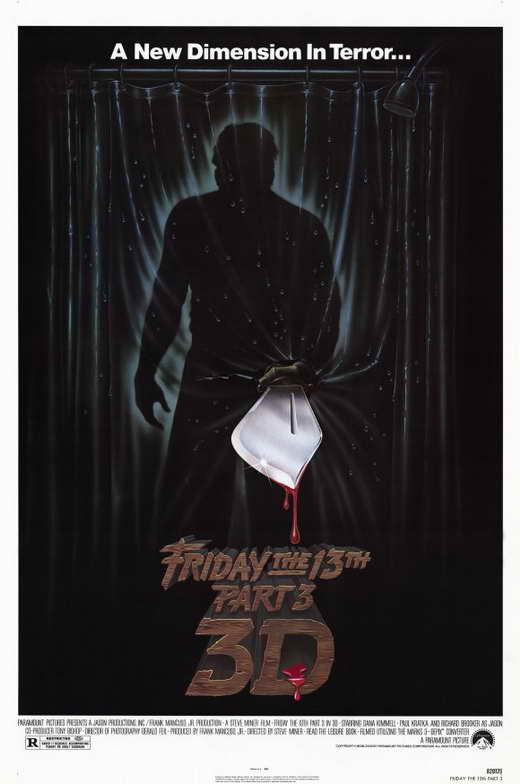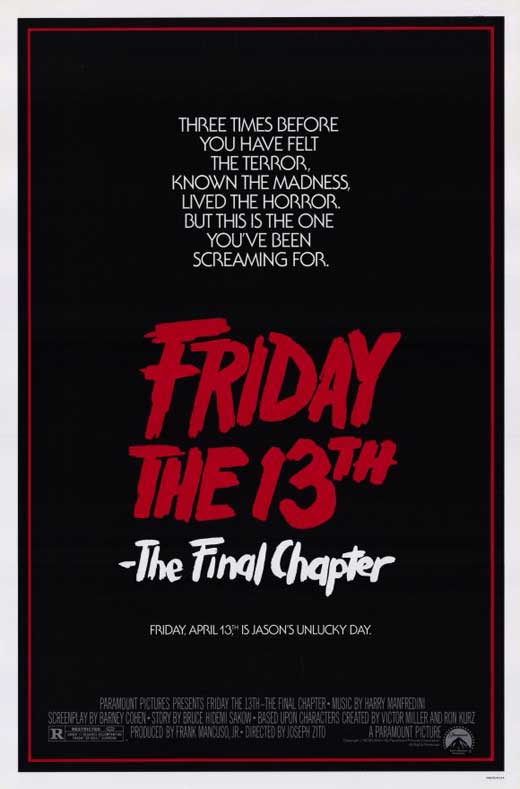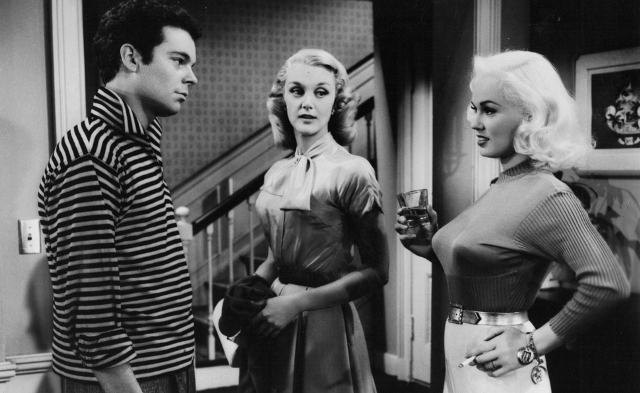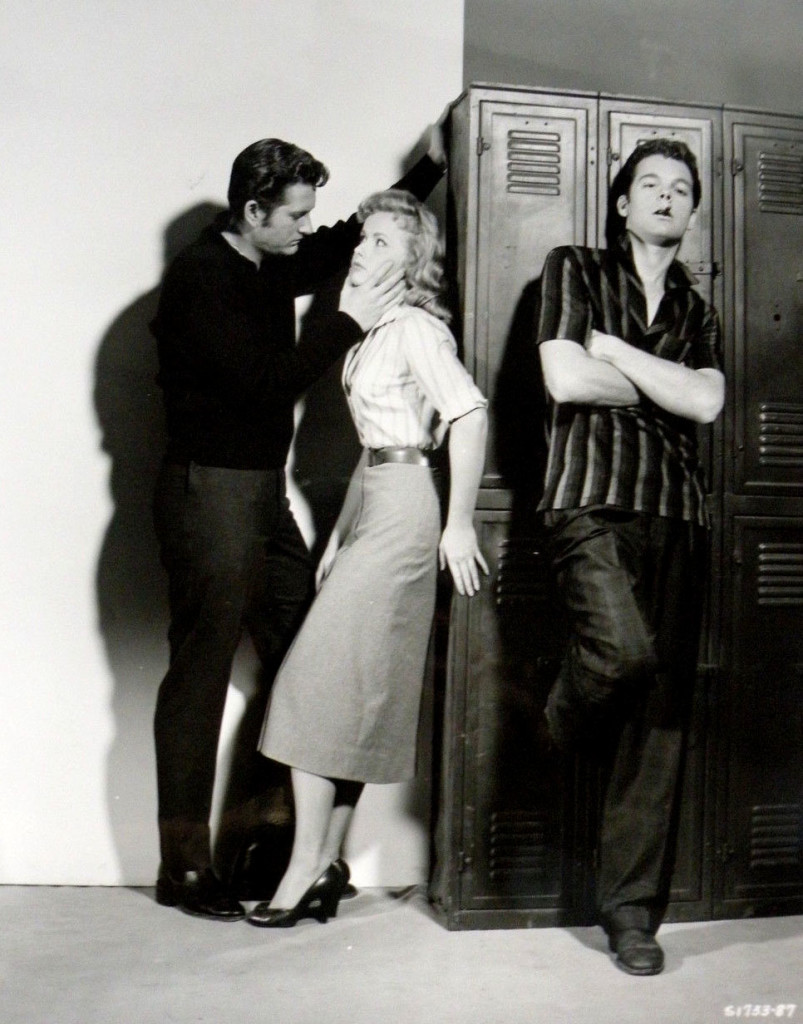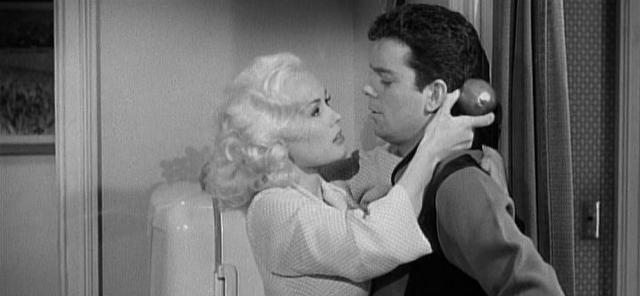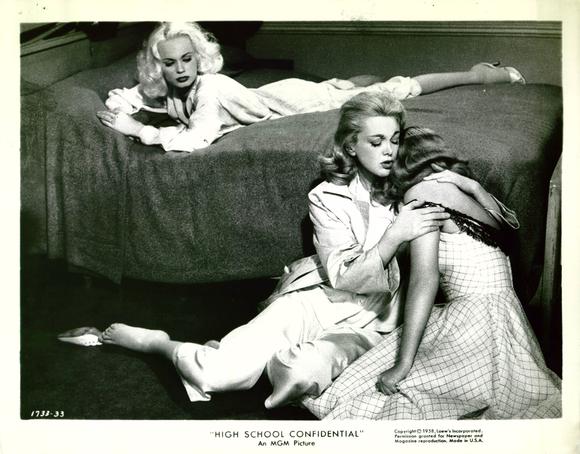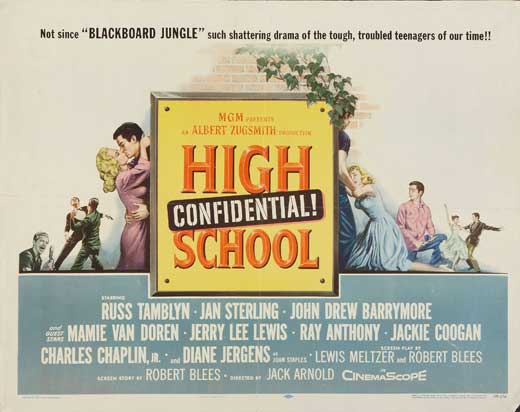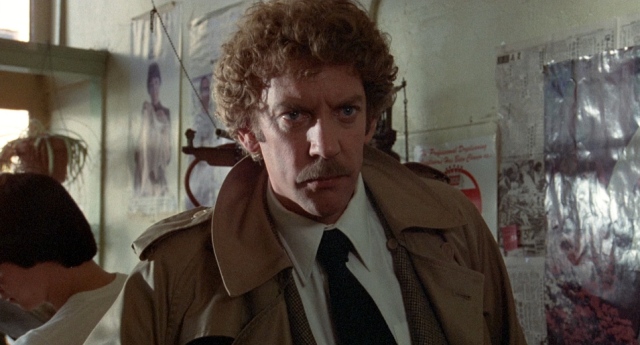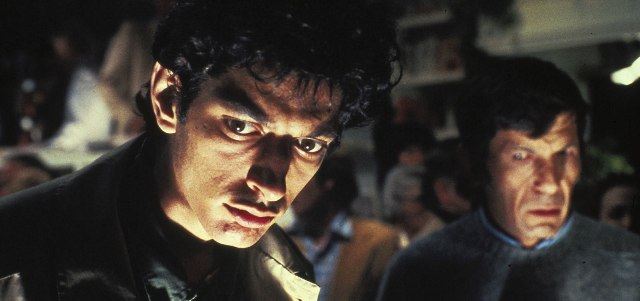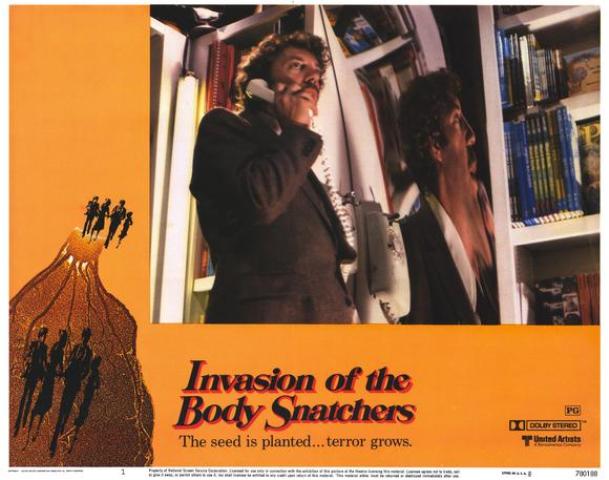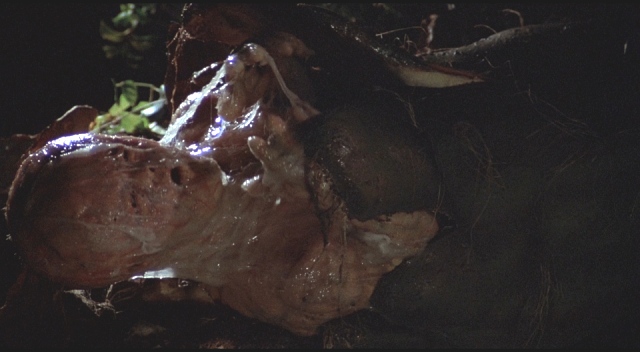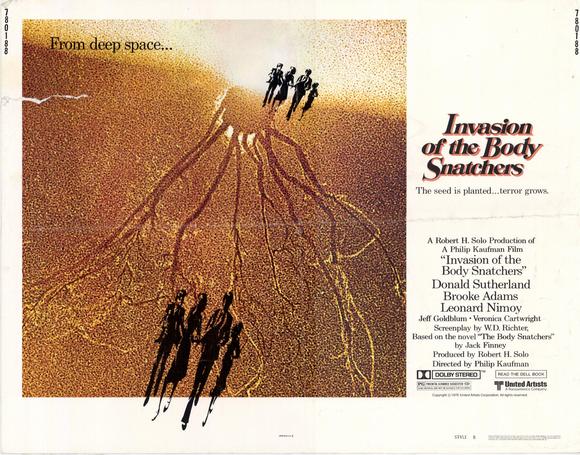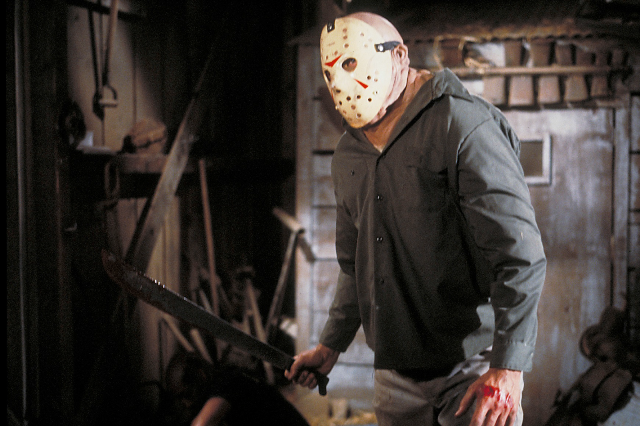
When last we left Jason Voorhees in Friday the 13th Part 2 (1981), he had rebounded from an encounter with a Final Girl and still somewhere stalks the Crystal Lake region. The film marked the introduction of Jason as the killer (in the first Friday the 13th, it was his sweater-bound mother who was the true assassin), but instead of wearing his iconic hockey goalie mask, he was disguised by a flour sack, climactically removed to reveal a deformed face. With the villain having survived, the following year’s installment, Friday the 13th Part 3 (1982), could easily slip back into the story without a Christopher Lee-style resurrection sequence. (Oh, those would come later.) Not that audiences would be spared another flashback recap, laboriously showing us moments that don’t really have an impact on what’s about to follow. A close-up of the preserved severed head of Mrs. Voorhees, from Jason’s secret shrine in Part 2, suddenly sees the title of the film popping out of her eyeballs in the style of the opening credits from the Superman movies. Part 3 is in 3-D, part of a wave of 3-D films from the early 80’s. I was too young to see this R-rated film in theaters, but I did go see Jaws 3-D (1983), released the following year, which had a 3-D trailer for Metalstorm: The Destruction of Jared-Syn (1983) – a post-apocalyptic mutant throws a spiked ball right at you! – just part of a 3-D wave that was kicked off by Comin’ at Ya! (1981), and included Spacehunter: Adventures in the Forbidden Zone, Amityville 3-D, The Man Who Wasn’t There, The Treasure of the Four Crowns (all from 1983), and animated latecomer Starchaser: The Legend of Orin (1985).
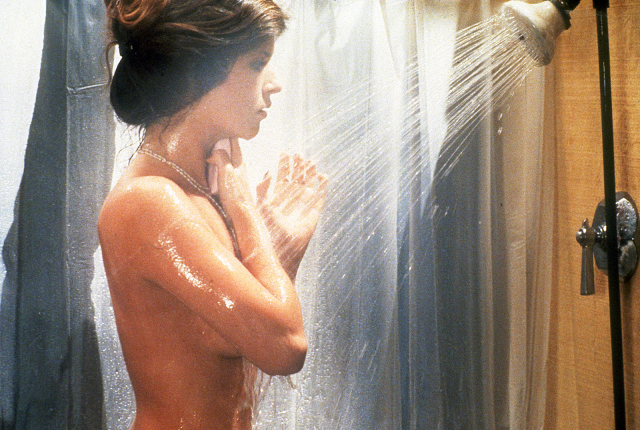
Debbie (Tracie Savage) in “Friday the 13th Part III.”
As a 3-D film, Friday the 13th Part III isn’t subtle. In fact, it shouldn’t even be watched in 2-D (which is the only way I’ve ever watched it, to my detriment). It’s a series of lunge-at-the-audience 3-D gags in the rough shape of a motion picture. On this recent viewing, I made a list of everything that is jabbed in the direction of the camera. These include (but are not limited to): a snake, a mouse, a baseball bat, a joint, a severed eyeball, a fist breaking through a window, a pitchfork, a machete, a harpoon, popping popcorn, a hot poker, “Rick’s eyeball,” a bookshelf, a juggling routine, and even a ridiculously extended scene with a yo-yo in homage to the seminal 3-D film House of Wax (1953). Returning director Steve Miner (from Part 2) was clearly not looking to make the Oscar shortlist. This is also the film in which the franchise began to parody itself: that nut offering a severed eyeball between his fingers is just a winking riff on Crazy Ralph from the first two films, and the teenagers are so underdeveloped (well, as characters) that you barely notice when they’re gone. But at least it’s a leaner list of teens than the last film, which is a step toward efficiency. Andy (Jeffrey Rogers, The Karate Kid Part II) and Debbie (Tracie Savage, who would soon quit acting and become a journalist) are the popular, horny kids; Shelly (Larry Zerner) is the desperate virgin nerd, who acts out by pretending to be a killer or a killer’s victim; Vera (Catherine Parks, Weekend at Bernie’s) is the pretty girl whom Shelly likes; Chris (Dana Kimmell, Lone Wolf McQuade) is – well, the Final Girl; and Rick (Paul Kratka) is her stiff boyfriend, a “farmboy” who dresses like a preppie in a snobs vs. slobs comedy. Not to be left out are two stoners who provide some Cheech & Chong style jokes, nor the cartoonish biker gang that Shelly and Vera accidentally draw into a feud. The kids drive a van whose bumper sticker says, “Springsteen: The Boss.”
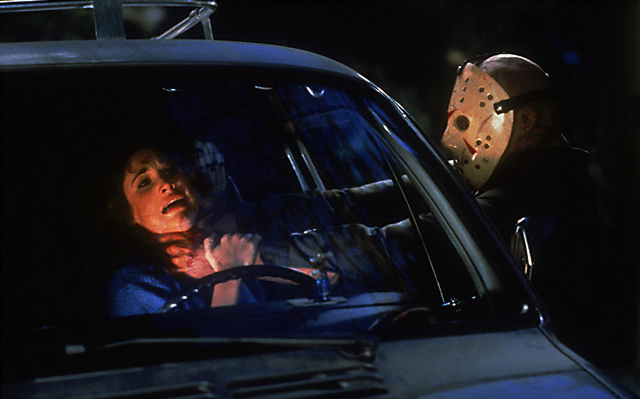
Chris (Dana Kimmell) is attacked by Jason (Richard Brooker).
None of this makes any kind of an impact apart from the 3-D effects (or lack thereof, depending on how you’re watching it), an oddball boogie-style theme from series composer Harry Manfredini, and the introduction of the famous hockey mask. The mask first appears worn by Shelly, but when Shelly is brutally dispatched, Jason adopts it as his own. Why? Because it looks good, and Jason seems to know it. Jason – as played here by Richard Brooker – seems to have his head fused to the mask, behind it nothing but a thickly corded neck, all menace and power. But Miner distills this Friday the 13th entry into its bare elements: a little bit of sex, lots of violent kills. In a self-referential moment, a character reads an issue of Fangoria and flips past an article on Tom Savini. (Savini, who provided makeup for the first Friday, wouldn’t return to the series until the next and “final” chapter.) Not for the first time in a Jason film, the ending was revised and reshot. Originally the morning-after scene included Jason’s reemergence from a cabin, abruptly decapitating Final Girl Chris. The version released satisfies itself with a reversal of the original film: Chris dreams that she’s attacked in a canoe by the living corpse of Mrs. Voorhees (instead of her son) and wakes up in a hospital. They should have stuck with the original ending, which would have made for the only surprising moment in the picture. Also revised was the makeup of the unmasked Jason: the abandoned design was by the legendary Stan Winston.
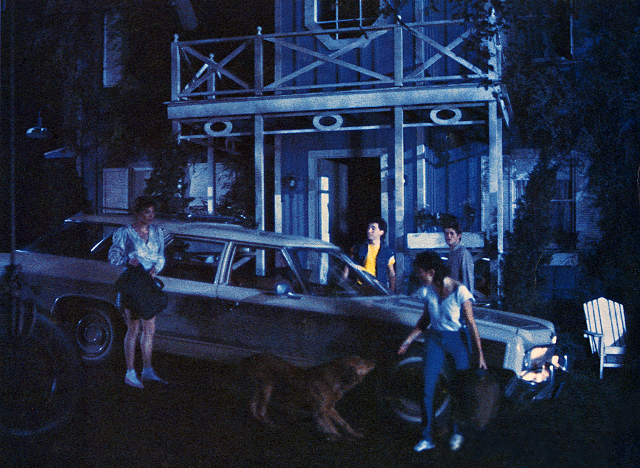
“Friday the 13th: The Final Chapter” – a fresh set of victims arrive.
Friday the 13th: The Final Chapter (1984)…was not. Arriving on a Friday the 13th almost two years after Part III (a break from the once-a-year pattern), the film brought in a new director, Joseph Zito (The Prowler, Missing in Action), saw the return of Tom Savini, and presented the slickest and most satisfying chapter yet. Nonetheless, it opens with yet another recap covering chapters I-III, as though we couldn’t possibly follow the story without them. (In these early days of incessant sequel-izing, you could generously say that these prologues capture the feeling of watching an old movie serial: “So far on Friday the 13th…”) Jason’s body is delivered to the morgue, where the attendant tells a nurse: “He got seven kids and three bikers. This time they got him!” (Yeah, we got it. Move on.) Jason awakens, of course, and kills them both. A new batch of teenagers are on their way to “Crystal Point,” passing an ominous tombstone for Pamela Voorhees. They also pass a hitchhiking overweight teen carrying a sign that says “Canada and Love.” When they pass her by, she turns it around to reveal “Fuck You,” and she flips them the bird. Jason kills her about a minute later. It’s not a promising beginning, but this group of teens proves to be a bit more engaging than most. Awkward Jimmy (Crispin Glover, Back to the Future) worries about the girl he likes who’s not answering his phone calls. His bud Teddy (Lawrence Monoson, The Last American Virgin) runs Jimmy’s problems through his computer program and concludes that he’s a “dead fuck,” meaning that he’s not good in bed, and not that his days are numbered, which of course they are. Paul (Alan Hayes, Neon Maniacs) and Samantha (Judie Aronson, Weird Science) are the popular, beautiful, horny couple this time. Sara (Barbara Howard, White Palace) is shy and nervous about the prospect of sex, so you might identify her immediately as the Final Girl. One of the nice things about The Final Chapter is that she’s a red herring. That is, it’s nice that this installment actually has red herrings.
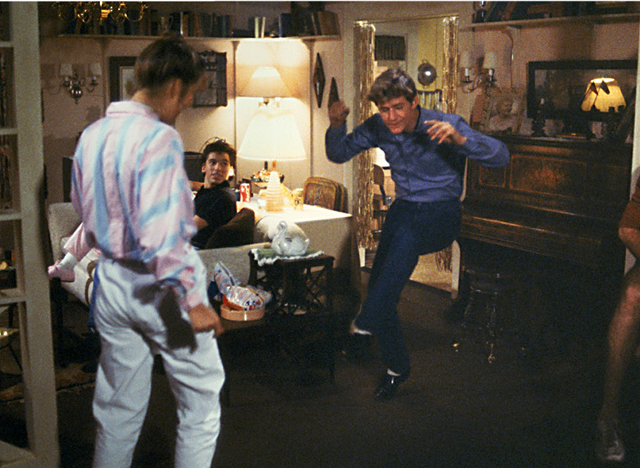
Crispin Glover livens a party with his unique dance moves.
Living deep in the woods is a family led by a mom (Joan Freeman, Bonanza) estranged from her husband, raising her teenage daughter Trish (Kimberly Beck, Roller Boogie) and little son Tommy (80’s icon Corey Feldman of The Goonies, The Lost Boys, and The ‘Burbs). Tommy shows all the signs of being a future Stan Winston or Tom Savini: his room is filled with elaborate monster masks and puppets which he made or modified himself. (Of course we don’t believe that for a second, but never mind.) When the van of teenagers pulls up next door, Tommy spies on one of the girls undressing from his bedroom window, and gets so excited he jumps up and down in bed and pulls the pillow over his face. The first thing the teens do on arriving at Crystal Point is go skinny dipping. (There’s much more nudity in this film than in earlier chapters, and the murders are more graphic. The exploitation level is high.) They meet two twins, Tina and Terri (Camilla and Carey More), who join them in the water, and later there’s a very memorable party which is launched by Crispin Glover cutting up the dance floor as only Crispin Glover can. There’s a bit more teenage drama this time around, and the characters are much better defined, which lends their scenes a shade of The Last American Virgin or Fast Times at Ridgemont High (1982).
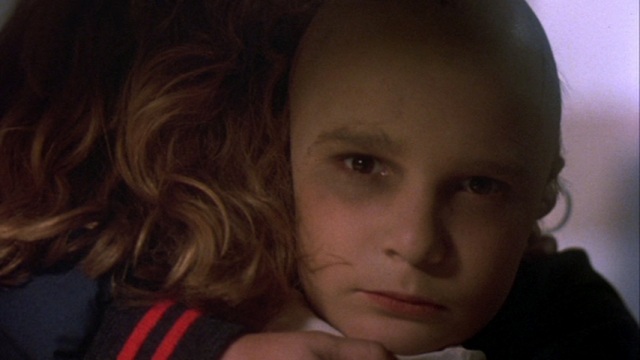
Corey Feldman’s evil gaze as Tommy Jarvis.
This time, the whole pack of teenagers are killed, and in ways demonstrating Savini’s creative ruthlessness. Jason, who in Part III was still demonstrating signs of being human, is now the Terminator. Trish and her little brother Tommy face off against Jason in all corners of their home, and no matter how much Jason is sliced and diced, he continues his relentless pursuit. The only one who can bring him down is Tommy, who actually anticipates that scene in every slasher when the killer seems to be dead but isn’t; as soon as he notices Jason’s fingers twitch, he lunges at the body with his machete and hacks, hacks, and hacks away. Trish is horrified, but Tommy is the audience surrogate, the horror movie buff who knows the rules of the genre. He even tries a trick similar to the one employed by the Final Girl in Friday the 13th Part 2, distracting Jason by pretending to be someone from his past – in this case, a younger Jason, which Tommy emulates by shaving his head like just another one of his homemade horror masks. After he hacks Jason to pieces off-screen, we see an almost evil gaze – and suspect that the spirit of Jason Voorhees might have passed into him. But that’s impossible, isn’t it? I mean, this is the Final Chapter, and Paramount Pictures wouldn’t lie to us…
